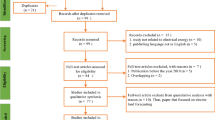Abstract
In electric industry, electricity loads forecasting has become more and more important, because demand quantity is a major determinant in electricity supply strategy. Furthermore, accurate regional loads forecasting is one of principal factors for electric industry to improve the management performance. Recently, time series analysis and statistical methods have been developed for electricity loads forecasting. However, there are two drawbacks in the past forecasting models: (1) conventional statistical methods, such as regression models are unable to deal with the nonlinear relationships well, because of electricity loads are known to be nonlinear; and (2) the rules generated from conventional statistical methods (i.e., ARIMA), and artificial intelligence technologies (i.e., support vector machines (SVM) and artificial neural networks (ANN)) are not easily comprehensive for policy-maker. Based on these reasons above, this paper proposes a new model, which incorporates one step-ahead concept into adaptive-network-based fuzzy inference system (ANFIS) to build a fusion ANFIS model and enhances forecasting for electricity loads by adaptive forecasting equation. The fuzzy if-then rules produced from fusion ANFIS model, which can be understood for human recognition, and the adaptive network in fusion ANFIS model can deal with the nonlinear relationships. This study optimizes the proposed model by adaptive network and adaptive forecasting equation to improve electricity loads forecasting accuracy. To evaluate forecasting performances, six different models are used as comparison models. The experimental results indicate that the proposed model is superior to the listing models in terms of mean absolute percentage errors (MAPE).
Similar content being viewed by others
References
Box G, Jenkins G (1976) Time series analysis: Forecasting and control. Holden-Day, San Francisco
Bunn DW, Farmer ED (1985) Comparative models for electrical load forecasting. Wiley, New York
Chang FJ, Chiang YM, Chang LC (2007) Multi-step-ahead neural networks for flood forecasting. Hydrol Sci J Sci Hydrol 52(1)
Chen TL, Cheng CH, Teoh HJ (2007) Fuzzy time-series based on Fibonacci sequence for stock price forecasting. Physica A 380:377–390
Chen TL, Cheng CH, Teoh HJ (2008) High-order fuzzy time-series based on multi-period adaptation model for forecasting stock markets. Physica A 387:876–888
Chiu SL (1994) Fuzzy model identification based on cluster estimation. J Intell Fuzzy Syst 2:267–278
Dickey DA, Fuller WA (1979) Distribution of the estimators for autoregressive time series with a unit root. J Am Stat Assoc 74:427–431
Diebold FX, Mariano RS (1995) Comparing predictive accuracy. J Bus Econ Stat 13(3):134–144
Enders W (2004) Applied econometric time series. Wiley, New York
Evans GW, Honkapohja S (2001) Learning and expectations in macroeconomics. Princeton University Press, Princeton. ISBN 0-691-04921
Fan S, Mao C, Chen L (2005) Peak load forecasting using the selforganizing map. Advances in neural network-ISNN 2005. Springer, Berlin. Part III, 640-9
Haida T, Muto S (1994) Regression based peak load forecasting using a transformation technique. IEEE Trans Power Syst 9(4):1788–1794
Hippert HS, Pedreira CE, Castro R (2001) Neural networks for short-term load forecasting: a review and evaluation. IEEE Trans Power Syst 16(1):44–55
Hsu CC, Chen CY (2003) Regional load forecasting in Taiwan—applications of artificial neural networks. Energy Convers Manag 44:1941–1949
Huang SJ, Shih KR (2003) Short-term load forecasting via ARMA model identification including non-Gaussian process considerations. IEEE Trans Power Syst 18(2):673–679
Jang JS (1993) ANFIS: adaptive-network-based fuzzy inference systems. IEEE Trans Syst Man Cybern 23(3):665–685
Nowak MP, Schultz R, Westphalen A (2005) A stochastic integer programming model for incorporating day-ahead trading of into hydro-thermal unit commitment. Optim Eng 6:163–176
Pai PF (2006) Hybrid ellipsoidal fuzzy systems in forecasting regional electricity loads. Energy Convers Manag 47(15–16):2283–2289
Pai PF, Hong WC (2005) Forecasting regional electricity load based on recurrent support vector machines with genetic algorithms. Electr Power Syst Res 74:417–425
Pino R, Parreno J, Gomez A, Priore P (2008) Forecasting next-day price of electricity in the Spanish energy market using artificial neural networks. Eng Appl Artif Intell 21:53–62
Rnberg RN, Misch WR (2002) A two-stage planning model for power scheduling in a hydro-thermal system under uncertainty. Optim Eng 3:355–378
Takagi T, Sugeno M (1983) Derivation of fuzzy control rules from human operator’s control actions. In: Proc IFAC symp fuzzy inform, knowledge representation and decision analysis, pp 55–60
Taylor JW, Buizza R (2003) Using weather ensemble predictions in electricity demand forecasting. Int J Forecast 19:57–70
Ying LC, Pan MC (2008) Using adaptive network based fuzzy inference system to forecast regional electricity loads. Energy Convers Manag 49:205–211
Author information
Authors and Affiliations
Corresponding author
Rights and permissions
About this article
Cite this article
Cheng, CH., Wei, LY. One step-ahead ANFIS time series model for forecasting electricity loads. Optim Eng 11, 303–317 (2010). https://doi.org/10.1007/s11081-009-9091-5
Received:
Accepted:
Published:
Issue Date:
DOI: https://doi.org/10.1007/s11081-009-9091-5




